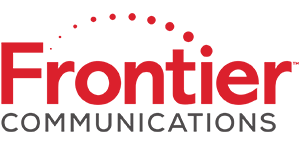Frontier understood the need to invest in designing and implementing an effective learning strategy, given that the new workforce was a critical component in the success of its acquisition. To ensure a seamless transition, Frontier established a learning strategy oriented to quickly upskilling the new staff, including a blended learning solution to cover 11 systems and 12 functional areas. The company focused its training on the following guiding principles:
The learning program was designed to bring new employees up-to-speed to become Frontier’s face for new customers and maintain the company’s brand image. It also focused on integrating new Verizon employees into the Frontier way of doing business, helping users move across their learning curve starting from gaining knowledge and acquiring skills to developing capabilities.
Based on the complexity and scale of the business transformation, the learning program went beyond just skill development to cover several key objectives:
Speed to Deploy – quickly deploy training to equip new employees with the required knowledge, skills, and Frontier way-of-working.
Speed to Proficiency – accelerate the time taken by employees to reach the desired proficiency level by providing effective training combined with adequate support.
Promote Frontier Culture and Vision – orient new employees to the Frontier vision and core values, ingraining new staff into the Frontier culture.
Positive Frontier Experience – create a positive learning experience for the new employees to ensure a seamless transition to their new company.
Frontier leveraged a role-based curriculum, eLearning modules, and Assima simulations and job aids for performance support. The company approached training as a continuous process rather than a one-time event, defining a holistic learning approach to address learning at each level:
Time Away to Learn:
Web-based Training (Know)
Learning All the Time:
Assima Simulations (Learn)
Learning Exercises (Practice)
Assima Job Aids (Apply)
Ask an Expert (Apply)
Assima simulations are a key to Frontier’s acquisition success, as they enable users to practice task completion with step-by-step instructions in a simulated environment with no support. Offering the industry’s most realistic virtual simulations of any enterprise system, the Assima Cloning Solution, also known as cloning software offers a highly accurate, virtual, interactive training environment users can explore, without breaking or damaging the live environment. This enabled Frontier to deliver on its “Business Centricity” guiding principle of tailoring training to the business needs as well as the training needs of the users.
Frontier upheld its guiding principle of “Standardization” as well with Assima cloning, as all training content outputs it generated maintained a consistent look, feel and quality. This was advantageous in the development of Frontier user manuals, job aids, reference guides and synopsis guides generated via cloning, all used for on-the-job support to perform tasks in the real system.
In the face of live system changes, Frontier’s learning team also leveraged Assima’s cloning tool to modify and update training modules easily to sync with the system.
Through a partnership between Frontier, Accenture and Assima, the team designed, developed and delivered 1,362 eLearning courses, 300 simulations, and 412 videos and job aids. More than 145,800 hours of training was delivered. Moreover, 18,000 existing employees were trained due to system enhancements and process changes. Training was built for varying roles and employee levels, aligned to the learning needs of target groups.
For the acquisition program, Frontier shifted from instructor-led training (ILT) courses to eLearning. As a result, the number of ILT courses and, therefore, the number of instructors needed also reduced. Additionally, eLearning modules with Assima simulations reduced time away from the job by approximately 60,375 working days.
The training program received positive feedback from end-users regarding the learning experience, especially the ability to practice in the simulated environment using Assima clones and demo learning exercises. Users often leverage the cloned simulations as reference materials when performing tasks in the actual system.
Frontier’s senior management also recognized the program for its creation of a positive Frontier experience for the new workforce, in addition to its sustainability as a training solution.
Altogether, Frontier saved approximately $18.6 million in training costs for the onboarding program due to the delivery of eLearning and simulation content.
The positive effect of the learning program was measured based on end-user satisfaction and impact on on-boarding time for employees – as such, it was perceived as a tremendous business success. Despite a short timeline and significant changes, Frontier not only experienced training cost savings, but also optimized their learning processes across multiple areas.
Frontier delivered their learning program on time and on budget, and also in sync with the company’s business objectives to help make its Verizon acquisition successful.
